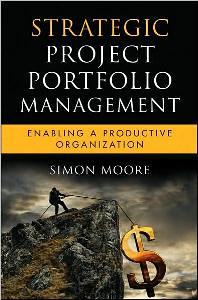The questions you ask determine the quality of answers you receive. Project managers should care about this more than most, because getting early information on how things are really progressing is the lifeblood of project management. It’s good to avoid leading or biasing questions by removing anything that assumes a particularly positive or negative answer from how you phrase the question. Even better is to use a question style that remains neutral and encourages comparison and reflection – for example by asking how the project is going relative to other project of a similar nature or at the same point from completion.
-
Join 857 other subscribers
Blog Stats
- 355,484 hits
The Book Behind The Blog

Search this blog
Recent Comments
Post Archive
- April 2018 (1)
- September 2013 (1)
- March 2013 (1)
- October 2012 (1)
- September 2012 (1)
- August 2012 (1)
- June 2012 (1)
- May 2012 (1)
- April 2012 (1)
- March 2012 (1)
- February 2012 (1)
- January 2012 (2)
- December 2011 (4)
- November 2011 (4)
- October 2011 (6)
- September 2011 (5)
- August 2011 (7)
- July 2011 (4)
- June 2011 (4)
- May 2011 (4)
- April 2011 (5)
- March 2011 (9)
- February 2011 (11)
- January 2011 (16)
- December 2010 (12)
- November 2010 (6)
- October 2010 (1)
- September 2010 (3)
- August 2010 (4)
- July 2010 (8)
- June 2010 (13)
- May 2010 (5)
- April 2010 (5)
- March 2010 (7)
- February 2010 (8)
- January 2010 (20)
- December 2009 (6)
- November 2009 (18)
- October 2009 (24)
- September 2009 (10)
- August 2009 (1)
- July 2009 (6)
- May 2009 (1)
-
Recent Posts
- Project Failure – Edinburgh Tram Project
- Book Review – 18 Minutes
- Project Management By Robots
- True Requirements
- The Perfect Game
- Read Better
- The Risks of Risk Management
- VIDEO – The Danger of Trusting Experts
- What Project Managers Can Learn From Advertisers
- Interesting Ideas For Managing Conflict
- Modelling Change Management
- The Winner’s Curse And How To Solve It
- Book Review – The Dead Hand
- Best Books of 2011
- VIDEO – 8 Factors That Lead To Success
- Listen Better
- How Fast Can You Fail?
- The Best Research On Project Management
- 17 Beliefs For Project Managers
- Book Review – Mindfire
Browse Blog By Topic
37 signals Amazon Kindle bent flyvbjerg book book review business change management checklists communication cost overrun crowdsourcing data visualization decision making demand management estimation Facebook game theory Google h1n1 HBR innovation james surowiecki jason fried Kindle leading change malcolm gladwell management management consulting marketing McKinsey meetings microsoft project muda NASA organizational culture outsourcing over-budget peter drucker PMI PMP portfolio management PPM pre-mortem prioritization process process management project project failure project management project planning project portfolio management questions RescueTime research rework risk management scope creep scrum Seth Godin social media start up strategic alignment strategic project portfolio management strategy Sydney Opera House technology ted trends triple constraint truman twitter us census what the dog saw and other adventures wisdom of crowds YouTubeView Posts By Category
- book review (25)
- career (5)
- change management (22)
- communication (1)
- decision making (39)
- innovation (60)
- lightweight projects (14)
- off topic (7)
- PM 101 (14)
- PPM (52)
- project failure (19)
- risk management (31)
- technology (24)
- trends (25)
- Uncategorized (61)
- video (14)
Pages

